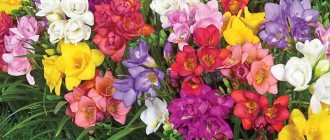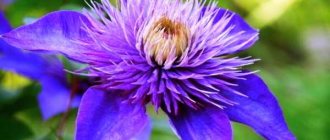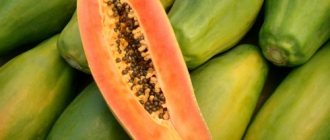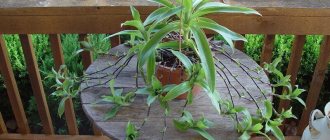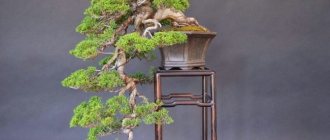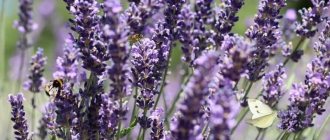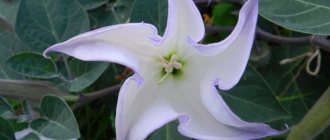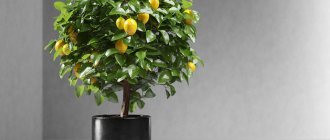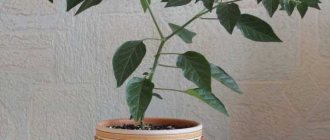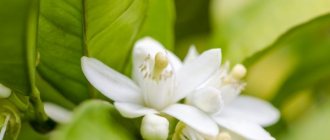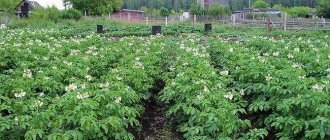Description of honey plant
The flower belongs to the Brassica family. The groundcover plant is considered low-growing, since the stems rise in height by no more than 35-40 cm. The shoots are highly branched and become lignified at the base. The rosettes are made up of oblong, lanceolate leaves with slightly noticeable pubescence.
Alyssum looks great among the stones, majestic and regal, like Monomakh's Cap
Small flowers are collected in brushes. Thanks to breeding work, varieties of alyssum with pink, red, violet, lilac, lemon yellow, pure yellow, lilac and white flowers have been developed. The reason for the popularity of the plant lies in that unobtrusive honey aroma, which is thinned by alyssum.
In addition, you can use it to create a beautiful landscape design, divide zones in your garden plot, or decorate your terrace and local area.
Description and features of alyssum
Alyssum (Alyssum) has dense, semi-lignified shoots, they are straight, ascending or creeping. The flower forms a dense subshrub from 10 cm to a meter in height and up to 1.5 in width. The leaves are thick, petiolate, oblong, oval, covered with silvery down. Reaches 15-40 cm, the buds are formed from four petals arranged crosswise and combined into inflorescences.
The flowers are presented in small clusters of snow-white, golden, pink, lilac, and yellow colors. They bloom in May, bloom until late autumn, excellent honey plants. The honey aroma of certain varieties of alyssum spreads over several meters.
The fruit is a flat pod with seeds that remain viable for three years. The rhizome is superficial with adventitious roots.
Forming a fluffy carpet, alyssum is used in the landscape design of parks, squares, for the design of flower beds, rock gardens, and ridges. They are also used to decorate hanging flowerpots, pots, and boxes.
Alyssum contains alkaloids, organic acids, flavonoids and has medicinal properties. It is used as a decoction for colds, an infusion for facial care, and dried parts in aromatherapy.
Choosing a location, growing from seeds
With the help of different varieties of alyssum, you can create a unique composition; the main thing is to choose the right color scheme so that it does not hurt the eye, but looks natural
The plant can be grown as an annual or perennial crop. Used to decorate empty spaces on the site after the bulbous plants have faded. Alyssum can be used to disguise unsightly places in the garden (holes, holes, stumps, holes). Flowers look beautiful in hanging flower pots and flower beds.
Site selection and soil preparation
Alyssum is a plant of the sun, so only well-lit areas are suitable for planting it. Sowing seeds or planting seedlings is carried out in fertile soil. If the site is poor, you will need to increase fertility: add organic fertilizers.
Rich crimson alyssum - decoration of a rocky garden
The plant does not like stagnant water, so you need to take care of the drainage layer. Let us remember that alyssum prefers a neutral or slightly alkaline soil reaction.
Sowing seeds
Sowing of alyssum begins after the soil has warmed up and the likelihood of return frosts has subsided. After leveling the area, you need to moisten the surface, then distribute the seeds evenly and lightly press them down with your hand.
Seeds should not be planted deep into the soil, as this can delay the time of seed germination, and each of us wants seedlings to appear faster.
It is important to water the seedlings correctly so that the seedlings do not die. Watering can be done from a watering can with a thin neck and water only along the edges of the pot, without getting on the plants themselves
For the most impatient gardeners, it is recommended to cover the planting site with film - the seeds will hatch on the 5th day!
When sowing seeds, you should not thicken the plantings, as this may contribute to the development of fungal diseases in the future.
Growing through seedlings
Seeds can be sown in ready-made containers filled with fertile soil. The nutritional mixture can be purchased at a specialty store.
Growing by seedlings is used by gardeners to obtain earlier flowering. Sowing seeds for seedlings is carried out already in the second ten days of February.
How to grow seedlings?
Alyssum seedlings
1To sow seeds, you need to prepare peat pots or a special container.
2Fill boxes or pots with nutrient soil.
3Moisten the soil surface with a fine spray.
4Spread the seeds evenly over the surface of the soil and press down lightly with your hand.
5Cover with film or glass to create a greenhouse effect.
6Place containers in the brightest place.
Alyssum seedlings are already in flower. Ready to be transplanted to a permanent location
When growing from seeds, you can not wait for flowering, but transplant directly into the ground. Flowering of seedlings can be achieved by sowing seeds early. When grown by seedlings, the growing season lasts for 2 months.
How to plant correctly
Most varieties of rock alyssum are not too demanding on growing conditions, have excellent winter hardiness, and adapt well to a new location. However, in order for perennials to develop qualitatively and maintain their highly decorative qualities, care should be taken to plant them correctly, in particular, to choose a suitable location and soil.
Did you know? Alyssum is widely used in the field of folk healing. For example, in Altai, infusions and decoctions from the plant are used for colds, kidney diseases and inguinal hernia.
When to plant
Alyssum is planted in open soil in the last weeks of May or the first days of June, when the risk of return of night frosts approaches zero. In the southern regions, some gardeners practice autumn planting - several weeks before the expected frost.
Selecting a location
The majority of varieties of the described plant prefer well-lit, sunny places, reliably protected from cold winds and drafts. If planting work is carried out in the southern regions, then planting in slight partial shade is allowed.
As for the soil, it is advisable for the crop to select light, nutritious, well-drained soil with a neutral, slightly acidic or slightly alkaline reaction. The best option would be sandy loam soils. When growing on clay soils, additional coarse sand and humus should be added.
The plant takes root well and grows on slabs and stones, which are well warmed by the sun's rays.
Important! The flower can withstand frosts down to -15
°
S, however, has an extremely negative attitude towards the lack of lighting. This nuance must be observed when planting bushes.
Rules for planting seedlings
When planting the described plant, it is necessary to take into account the fact that it grows quite quickly and intensively in breadth, and therefore requires a large space. As a rule, a distance of at least 40–50 cm is maintained between seedlings, depending on the variety.
Planting technology consists of the following steps:
- dig a hole 1.5 times larger than the size of the root system;
- plant the seedling in a hole, do not deepen it too much;
- Sprinkle the material with soil and water generously.
If the crop has grown too large, then before planting it, the bushes should be divided into several parts and each of them should be planted as a separate seedling.
Outdoor care
A riot of colors - a rainbow carpet of different varieties of alyssum
An unpretentious plant needs minimal care: timely watering, loosening the soil with subsequent removal of weeds, and fertilizing. In addition, alyssum needs pruning to avoid the unsightly appearance of the plant after flowering.
Watering
The plant needs to be watered regularly, especially in dry times.
Lack of moisture affects the development of the flower; it can drop flowers and buds overnight.
Excessive soil moisture will lead to rotting of the root system and the plant will simply “fall off its feet.”
You can determine that a flower needs watering if you dig up the soil 3 cm deep near the bush and it turns out to be dry, which means it needs watering. To reduce the frequency of watering, especially in dry times, it is necessary to mulch the plantings.
Fertilizer application
Perennial and annual species require different feedings, however, if planted in nutritious soil, they grow and develop well without fertilizing.
Annual varieties are the most demanding in terms of nutrients
During the entire growing season, it is recommended to feed the plants 4 times with nitrogen-containing and potassium fertilizers. In mid-spring, already at the end of April, organic matter is added to the soil. After seed germination, the seedlings are fed with nitrogen-containing preparations (but only after the development of several true leaves), then watered with a solution of complex fertilizers.
Lush and long flowering is possible only with timely application of fertilizers. If the soil is fertile, frequent fertilizing can be avoided.
Perennial plants are demanding on the saturation of the soil with nutrients, so annually it is necessary to add humus or water with infused chicken manure diluted with water 1:10. Plants need light soil, therefore, by weeding the soil once again to remove weeds, you make the soil loose and breathable, which provides the plant with better conditions for development.
Pruning is a must
Proper pruning of alyssum allows the plant to fully develop and bloom profusely. In early spring, it is necessary to remove all flower stalks, weak, dried out and diseased shoots from last year's shoots. It’s even better if this procedure is done in the fall.
Pruning not only allows you to preserve the decorative appearance of the bush, but also extends the flowering period
After the plant has finished blooming, you will need to cut off all flower stalks and shorten the shoots by almost half. This procedure stimulates re-blooming. During the growing season, alyssum bushes grow very much, so pruning is simply necessary - to eliminate the sloppiness of the bush and make it compact and well-groomed.
Preparing for winter
Silver alyssum can tolerate temperatures as low as -23 °C. all other varieties cannot survive harsh winters. For some of them, a drop to -15 °C is disastrous.
Lobularia looks great in hanging containers and flowerpots. Used to decorate balconies
To help the plant survive the winter, in late autumn you should add a layer of mulch and cover the bush itself with fallen leaves. In snowy winters, it is recommended to pour a mound of snow on the alyssum.
Planting alyssum
Annual or perennial alyssum - growing flowers begins with collecting seeds. After flowering, oblong pods form on the bushes. They are collected.
Collecting seeds
What water to water indoor flowers
For collection in September-October, cloth or film is spread under the bushes. Grind the dried fruits right on the spot. Large fragments are removed. The seeds (very small) are collected in a linen bag. Store in a dry, ventilated, draft-free room. Germination lasts 2 years.
If it was not possible to collect the seeds and they fell off, they are swept out from under the bush with a broom. Collect on cloth, get rid of large debris.
Planting seeds
Small seeds cannot be germinated. Therefore, they are sown directly into containers for seedlings. Pour nutritious soil into a shallow container and moisten it. The soil should contain a small amount of lime. Seeds are also sown in peat tablets.
Soak in a disinfectant solution. Place it on the surface with tweezers or a toothpick and press down with a dry hand or spoon. Cover with glass or film and place in a warm place – 18-20 °C.
The procedure is done at home at the end of winter. If there is not enough light, the planting is illuminated with an LED lamp. The soil is carefully sprayed or watered into a tray.
Important! If the seedlings are flooded, they will get blackleg.
Transplanting seedlings
Seeds germinate in 12-15 days. When 4 true leaves appear, the seedlings are picked. Transplant into separate containers or thin out. Dense seedlings will soon begin to interfere with each other, thin out, and lag behind in growth. The space required for picking is 4 times larger. Therefore, they stock large boxes with substrate.
The seedlings are planted in rows, at a distance of 2-3 cm. If it is still far from planting in open ground, they are planted further away.
Picked plants need watering and spraying. They are hardened off and fed with means for flower seedlings. Hardening begins with 15-20 minutes in the fresh air. Every day the time is increased by half an hour.
Alyssum in the garden
There should be enough heat and light so that the alyssum does not stretch out or become thinner.
Reproduction
In addition to the usual method of propagating alyssum by seeds, methods such as propagation by cuttings and dividing the bush are no less popular.
Cuttings
Cuttings are a vegetative method . It can be propagated 2 times during the growing season - at the very beginning and at the end of summer.
It is impossible to root alyssum cuttings in open ground; this method is used only under one condition, if the containers with the cuttings are sent to a winter garden or a special greenhouse.
The cut cuttings are planted in prepared cups filled with a nutrient mixture, watered thoroughly and the soil moisture is monitored daily. If you allow the earthen clod to dry out, you can destroy young plants.
To propagate alyssum by cuttings, you should choose healthy shoots and remove the flower stalks completely.
When the roots become visible through the wall of the transparent cup, the alyssum is planted in a flowerbed or rocky hill, watered well and the soil moisture is monitored daily.
Division
It would seem that this is the simplest method of reproduction, but it does not always give positive results. You need to start propagation at the beginning of the growing season: as soon as green shoots begin to appear above the ground.
The photo shows in detail the process of dividing the mother plant
The bushes are dug up completely and divided into parts. All divisions are transplanted to a new place, watered and wait for establishment. The distance between prepared holes for transplantation should not exceed 30 cm.
Alyssum in landscape design
They are grown in garden beds and large parks. Some types of crops are herbaceous perennials, others germinate annually from ripened seeds. Having knowledge about the flowering time of each, you can effectively decorate any area during the warm season.
For example, landscaping a rocky hill or camouflaging a problem area, or hiding an unsightly sewer manhole behind a flower cap. Mountain alyssum (Alyssum montanum) can be grown as an ornamental hanging plant. Over the summer, the length of the flower “beard” hanging from the flower pots will reach 30–35 cm.
Video: Alyssum in the flower garden
Collection and preparation of seeds
You can start collecting seeds at the end of September. By this time the seeds are already fully ripened
You need to break off all the dried branches along with the baskets, place them on a spread out blanket and rub them with your palms. The cake will remain in your hands, and the seeds will fall onto the blanket. All debris will need to be removed and the seeds sent to a dry room for additional drying.
It is advisable to dry in a well-ventilated area and store in paper bags or cloth bags.
Pests and diseases: control with folk remedies and insecticides
Since the plant belongs to the Cruciferous class, the Brassica family, alyssum is plagued by the same pests as cabbage and radishes. Let's look at the main harmful insects and try to get rid of them using folk remedies, without using chemicals, so as not to harm the bees.
Cruciferous flea beetle
A fairly damaged appearance of the flower carpet indicates the appearance of the cabbage flea beetle. To combat, use vinegar essence (1 tbsp per 10 liters of water).
This is a harmful insect that can be found on the shoots of alyssum
Only adult specimens can be treated with vinegar essence; young plants with delicate foliage can get burned.
If the cruciferous flea beetle has damaged the plant before flowering, insecticides can be used for treatment. Basically, the flea beetle attacks flowers that have not yet matured; as soon as the plant grows up, it is no longer afraid of such a pest as the cruciferous flea beetle.
White butterflies
You can only cope with white butterfly caterpillars with the help of insecticides, for example, effectively use Lepidocide. Folk remedies do not give a positive result.
White butterflies cause enormous damage to all plants of the Brassica family
Chemical means of insect control can and should be combined with mechanical ones - use manual collection of caterpillars, removal of weeds, burning damaged parts of plants. First you need to try all sorts of traditional methods and only then take on chemical ones.
White rust and brown rot
Quite dangerous diseases that can completely eradicate plants. If signs of white rust or brown rot are noticed, you must immediately remove all plants along with their roots from the ground, take them away from the site and burn them.
Powdery mildew
A disease familiar to everyone
You look at the plant, and it seems to be sprinkled or dusted with some kind of flour. The disease often appears when growing alyssum in dark places along with dense plantings.
A carpet that is too thick cannot provide normal air exchange and this leads to disease, since there is increased humidity and flower shoots do not dry out.
Compliance with agrotechnical cultivation techniques allows you to grow a huge, creeping carpet of various varieties
Affected plants' leaves turn yellow and fall off. In addition to fungicides, a solution of colloidal sulfur and laundry soap can successfully combat powdery mildew.
Possible growing difficulties
If the alyssum does not bloom or begins to dry out, they look for the reason why the crop disappears. Perhaps he was attacked by a cruciferous flea beetle. Deliverance – 1 tbsp. l. vinegar essence diluted in a bucket of water. Only adult plants are sprayed.
Other problems:
- Caterpillars pester plants. The bushes are treated with infusion of chamomile or tobacco with soap.
- Cabbage moths and whites are destroyed with the drugs entobacterin and lepidocide.
- If the soil does not allow moisture to pass through well, the disease brown rot - late blight - appears. It attacks the roots. Treated with fungicides.
- Lobularia can get powdery mildew - spray with Bordeaux mixture.
- It’s more difficult with a viral mosaic. The leaves are covered with spots of white and green. There is no cure for this - the bush is pulled out by the roots and burned.
In the world of decorative flora, alyssum occupies a place of honor. It is a herbaceous ground cover plant with small flowers. There are many colors. It can be perennial or one year of development. Planting and caring for is not difficult - it propagates by self-sowing (annuals), cuttings, and dividing bushes. Seedlings are grown from seeds.
It’s easy to look after a flower: watering, pruning, fertilizing, treating pests. Growing and caring for alyssum is accessible to beginning gardeners.
Common species to grow in gardens
The genus includes several dozen species of alyssum and more than 200 varieties. Only 6 species are grown in gardening.
Perennial bushes easily tolerate frost and are recommended for growing in regions with cold climates . Annual plants are more sensitive to temperature conditions, so they should be grown in the southern regions, since the seedlings may die if possible return frosts.
Alyssum is used to frame a round flower bed
The difference between perennial and annual alyssum is the duration of flowering; if the first one pleases with flowers for only a month, then the second one can be fragrant and thin out its pleasant aroma from mid-summer to mid-autumn.
Rocky
The most common type. With its help, landscape designers create unique compositions in landscaping a personal plot: they design borders along paths, paths, and lawns. A perennial low plant, the height of the stems does not exceed 20 cm.
Alyssum rocky is a native of the Mediterranean. It was there that they first began to use it for landscaping.
The lemon-yellow scattering of rock alyssum is visible from afar. Flowering is short-lived, only a month
Grows well in moderately moist soils, in open sunny areas. If you choose the right place, the plant will delight the eye with its flowering for a long time. Rock alyssum is suitable for growing to hide defects on the site: the flowers mask cracks, unsightly stumps, and holes.
Mountain
A perennial plant up to 10 cm high. Numerous rosettes with gray leaves create the impression of a dense carpet spreading along the ground. Small yellow flowers, collected in inflorescences, rise above the foliage.
It blooms very early, in April, flowering lasts no more than a month. A luxurious cap of yellow flowers, behind which no foliage is visible, looks welcoming on the ground that is still bare after winter.
Creating compositions using mountain alyssum
Then, in place of the flowers, boxes ripen. If you don’t want to collect the seeds, you should remove all the boxes, as they spoil the whole picture and look unattractive. The plant needs pruning.
Marine (lobularia)
A low annual with small, grayish-green, lanceolate leaves, with barely noticeable pubescence . During flowering, the shrub does not exceed 20 cm in height. Above the gray cap of pubescent foliage rise clusters of inflorescences with violet, lilac or white, rather small flowers.
Abundant flowering is observed in July and continues until mid-autumn. To prevent the wave of flowers from subside, it is necessary to cut off the faded flowers in time.
Using lobularia to fill the space near the tiles on the path
What is the beauty of pubescent foliage? The fact is that it is precisely this that helps the plant tolerate a short-term drop in temperature. This species grows and develops better in nutritious soils with a neutral reaction.
To ensure lightness of the soil, crushed stone and river sand should be added before planting.
Silver
Vegetative dense rosettes of silvery alyssum form a dense carpet. The perennial plant forms wide oval-shaped bushes up to 40 cm high. This is the most gigantic specimen of the species diversity.
Foliage develops only in the lower part of erect, numerous stems. The leaves are oblong, decorated with barely noticeable hairs on top, pubescent below, and silver-gray in color.
Corymbose racemes consist of numerous lemon-yellow flowers
Lemon-yellow flowers are produced in corymbose, flat and loose racemes. The plant is frost-resistant and tolerates harsh winters with temperatures below -23 °C.
Popular varieties
Some types of alyssum bloom in shades of pink and purple. Rock alyssum flowers are predominantly yellow. Even the names of the varieties contain references to the golden shades of lush flowering.
Alyssum rocky Golden wave
The Golden Wave rock alyssum bushes live up to their name. Many bright inflorescences of golden yellow color cover lush bushes with a diameter of about 40 cm and form a wavy cushion. The height of this variety of alyssum can reach no more than 25 cm. When grown as seedlings, rocky alyssum Golden Wave blooms a little later than a month after placement in the flowerbed. When favorable conditions are created, flowering lasts almost all summer. The silvery foliage is no less decorative than the flowers.
Alyssum rocky Gold placer
Gardeners classify the Golden Placer variety as a ground cover. Lush bushes about 15-20 cm high are covered with yellow flowers. The strongly branched plant quickly grows throughout the entire space. The Golden Placer blooms from May to the end of June. By creating optimal conditions and timely pruning, you can get secondary flowering closer to autumn.
Alyssum rocky Inca gold
A perennial covered with many yellow fragrant flowers, it has small inflorescences. Strongly branched bushes with bluish pubescent small leaves are used as a ground cover plant.
Alyssum rocky Mountain gold
The low-growing perennial variety Mountain Gold forms a bright carpet in the flowerbed. The bushes of a flowering plant with lodging shoots are covered with small lush inflorescences until frost.
Alyssum rock Aphrodite
One of the few varieties of rock alyssum, whose flowers are purple, red and pinkish, is grown as an annual crop. The plant blooms from June to October, and in some regions even longer. The low-growing, branched plant has many simple flowers in lush clusters.
Alyssum rocky yellow
One of the shortest varieties of rock alyssum, the height of the bushes rarely reaches more than 10 cm. A branched plant with recumbent and ascending shoots develops well in sunny areas with rocky, acidic soil.
Perennial and annual varieties of allisum that have gained universal popularity
Among the huge variety, I would like to highlight several varieties of alyssum, differing in the size and shape of the flower, the color of the petals, and the length of the leaves.
It is recommended to grow several varieties, so you can create a rainbow carpet of blooming alyssum on your site.
The Snow Queen
The Snow Queen is represented by a mixture of 6 varieties. The blooming flowers can be red, white, pink, purple, lavender and yellow. It is a perennial plant that gardeners grow as an annual crop. During the blooming of flowers, no foliage is visible!
It is advisable to grow through seedlings, since flowers appear 2 months after sowing dust-like seeds, which need to be scattered over the surface of moist soil. The best time for sowing is late March early April.
A mixture of 6 varieties. Such a riot of colors in one area. Looks great!
To germinate, the seeds need high humidity and a temperature of about +18 °C, so it is recommended to cover the bowl with the seeds with glass and place it closer to the radiator. It should be planted in open ground in the second ten days of May, keeping a distance of 20 cm between seedlings. For better flowering, the plant must be fed with complex fertilizers.
Due to its decorative properties and low plant growth, the Snow Queen mixture is used in border decoration.
According to reviews from gardeners, it grows and blooms well even on poor soil, tolerates short-term drought well and does not fade in direct sunlight.
Pink Queen
A miniature variety with a delicate aroma of flowers. Numerous small flowers collected in inflorescences thin out the honey aroma. The plant is not tall, only 5-10 cm in height, but with its dwarf growth it forms a rather dense lilac-violet creeping carpet. The leaves are elongated, lanceolate.
In order for the variety to continuously delight with a riot of colors, it is necessary to remove faded flowers and seed pods from time to time , if you do not set out to collect the seeds.
Excellent variety for border decoration
The Pink Queen is used to decorate borders and looks beautiful framed in flower beds, balcony boxes and flowerpots. Some gardeners use it to try to close the space between the tiles on the path. Alyssum is an indispensable plant for decorating rocky hills.
The Pink Queen is a cold-resistant variety. It develops better on light soils, well drained, without stagnant water. Sowing of seeds is carried out in May or before winter.
When the ground warms up, the seeds germinate very quickly, within a week. After the seedlings have grown stronger, it is necessary to thin out the plantings; there should be at least 8 cm between plants, otherwise thickening will lead to poor flowering.
Bimbo
A perennial plant, grown by sowing seeds, blooms only in the second year. However, you can deceive nature and get flowering in the same year if you sow seeds for seedlings in February.
Bimbo is a low-growing plant, not exceeding 20 cm in height.
Above the narrow lanceolate leaves, a cap of snow-white flowers with a honey aroma blooms.
Used in border design, to decorate balconies and loggias, planted in flower beds and rocky hills
Prefers sunny areas, but copes with partial shade. After seed germination, the plantings are thinned out (if the soil is poor, it is better to leave everything as is). Flowering is long-lasting, beginning in June and continuing until October.
The honey smell not only attracts bees, but also repels pests. However, even such a heady aroma cannot resist the cabbage flea beetle, since the plant belongs to the Brassica family. It is better to get rid of pests using traditional methods, because alyssum is a honey plant; you can kill both pests and beneficial insects with one chemical treatment.
For processing, you can use vinegar essence in the proportion of 1 tbsp. l. for 1 bucket of water. They love alyssum and caterpillars, which you can try to deal with using an infusion of tobacco and laundry soap.
Snow carpet
An amazing variety: if you look at a flowering bush, it looks like a snow-white airy cloud, “woven” from small flowers collected in numerous dense brushes. Small leaves are hidden under the cloud of flowers.
The shoots are low, 20 cm in height, and have the ability to spread along the ground
The variety can be used as a supplement when growing tall plants: roses, lilies. Their proximity has a beneficial effect on both plants. For example, if a Snow Carpet is planted under lilies, it helps protect the soil, and, consequently, the root system of lilies from overheating.
And when the flowering time of the lilies ends, a snow-white cloud of alyssum appears. Same with roses. For lovers of contrasting colors, diascia or pink petunia can be surrounded by a white cloud of alyssum flowers.
Purple Haze
Miniature, long-flowering variety. Small flowers thin out the honey aroma. Shoots grow up to 15 cm in length. Purple Haze is a scattering of purple flowers above narrow, lanceolate leaves.
Continuous flowering can be achieved if all faded flowers, bare shoots, and fruit set are removed in time
The variety is beautiful in itself and is used to decorate ridges, flower beds, and balcony boxes. Gardeners often plant between pavers to fill unsightly spaces.
Aphrodite
The variety is grown as an annual. Aphrodite has compact bushes not exceeding 10 cm in diameter. It blooms with purple flowers. It can produce both red and pink inflorescences, which can be removed immediately if desired.
Gardeners combine the purple flowers of Aphrodite with pink saxifrage; it goes well with sanvitalia, and against the background of bluish sedums it looks simply beautiful
It is grown by sowing seeds directly into the soil followed by thinning. It blooms in the first ten days of June, but the bushes still look weak. Aphrodite appears in full glory in August.
It's not so hot at this time. It is preferable to plant the variety in a shaded place.
Areas of application
Thanks to the beneficial properties contained in the flowers and leaves of the plant, alyssum is popular among traditional healers and cosmetologists. The vegetative parts of rock alyssum are used for medicinal purposes.
Composition of alissum:
- alkaloids
- steroids
- acids of organic origin
- flavonoids
For colds, a decoction of flowers is useful. It not only relieves fever, but also has an anesthetic effect. A decoction of the leaves is used as a diuretic and laxative, recommended for intestinal problems.
An infusion of flowers is used to bleach age spots and remove freckles.
Since alyssum in Latinization is translated as rabies, in the old days it was this plant that saved from the bites of rabid animals. Dried raw materials cannot be stored for more than a year, as they lose their medicinal properties.
Siberian and Altai healers use decoctions to cure inguinal hernia and remove kidney stones. Stones are different from stones, each of them differs in origin and structure, so alyssum decoction does not affect oxalate stones.
The plant is also used in color therapy and aromatherapy. It is important to collect and dry bunches of plants, then hang them correctly indoors. Alyssum helps maintain tone, improves sleep quality, reduces headaches, improves well-being
Fertilizers
While growing alissum, caring for it involves regular pruning. When alyssum begins to grow its green mass, it needs to be fertilized with nitrogen fertilizers. The fertilizer is prepared according to the following scheme: one tablespoon of Agricola-7 combined with urea is diluted in ten liters of water. When buds form on the flowers, complex fertilizer should be applied. If you apply fertilizers in a timely manner and in the required quantities, the alyssum will bloom without interruption until late autumn.
It is important to take into account that it is more often necessary to feed annual species. They need to be fertilized four times throughout the season. The first is applied immediately before flowering.
